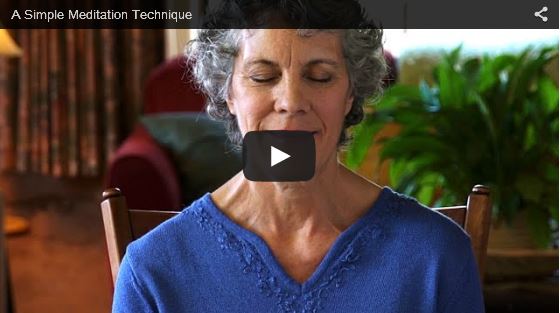How to Meditate (Day 1)
Dear friends,
The following is a very simple meditation technique you can learn quickly. For more comprehensive instruction, I co-teach a Learn to Meditate online class.
Tense and Relax
Before you learn to meditate, there are two exercises that will deepen your practice.
Sit up straight, either in a chair or on a pillow on the floor, so that you’re comfortable and relaxed. In tomorrow’s email you’ll learn more about posture and how to sit for meditation.
When you’re ready, tense your whole body, and inhale sharply through the nose, with one short and one long inhalation. Hold the breath and tension for a few seconds, then exhale forcibly through the mouth, with one short and one long exhalation. As you do, release the tension in your muscles. Repeat a few times.
Breathe Evenly
Inhale slowly, counting to eight. Hold the breath for eight more counts, then exhale slowly to the same count. Without pausing, inhale again — hold — and exhale, each to the count of eight. Repeat this exercise three to six times. You can vary the count according to your lung capacity, but always keep it equal during inhalation, holding, and exhalation. Finish your practice by inhaling deeply, then exhaling completely.
Hong-Sau Technique of Concentration
You are now ready for the meditation technique itself. Wait for the next breath to come in of its own accord. When it does, mentally say Hong(rhymes with song). This time, don’t hold the breath, but exhale naturally. As you do, mentally say Sau (rhymes with saw). Hong-Sau is an ancient Sanskrit mantra. It means “I am He” or “I am Spirit.” Try to feel that your breath itself is silently making the sounds of Hong and Sau.
Make no attempt to control your breath. Simply observe it as it flows in and out naturally. In the beginning you may be mostly aware of the physical manifestation of the breathing process as your diaphragm and chest expand and contract. As your breath grows calmer, however, try to become aware of its flow in the nostrils, then gradually transfer your awareness higher and higher in the nasal passages.
With the eyes closed, turn your gaze slightly upward towards the point midway between the eyebrows on your forehead, as if you were seeing the peaks of distant mountains. Concentrate there. This is the seat of spiritual consciousness in the body, also called the spiritual eye. In time, try to feel the flow of the breath near the spiritual eye within your forehead.
Keep your gaze steady throughout your practice. Don’t allow your eyes to follow the movement of the breath. If you find that your mind has wandered, gently bring it back to an awareness of the breath and the mantra.
Sit in the Stillness
Finish your practice of Hong-Sau by inhaling once through the nose, then exhaling three times through the mouth, and then forget the breath. Concentrate deeply at the point between the eyebrows. Keep your mind focused and your energy internalized. Absorb yourself in the peace generated by your practice. Continue for at least five minutes. Finish with a prayer to the Divine, offering yourself into the light.
Try to practice this at least once a day if you can for 5 – 15 minutes. As you come to enjoy it more, you can increase your time to 30 minutes, then to an hour or more.
Ideally it would be good to meditate twice a day, in the morning and at night, but find something that works with your schedule so that you are able to keep it up. It is good to stretch, but don’t strain. Doing one longer meditation once a week, about one and a half times longer or twice as long, will help you to increase your time because it will make meditating longer feel less intimidating.
You now know the basics of meditation. For more comprehensive instruction, I co-teach a Learn to Meditate online class.

No comments:
Post a Comment